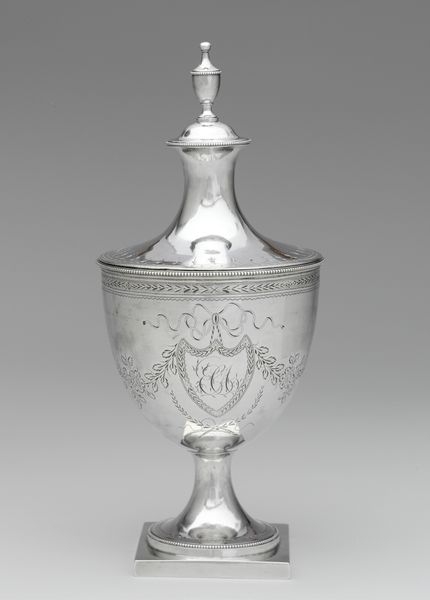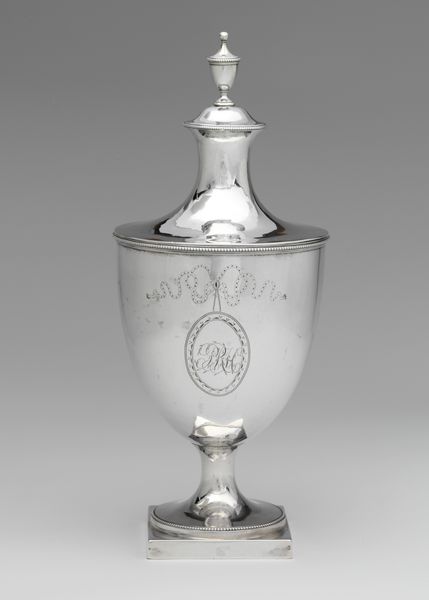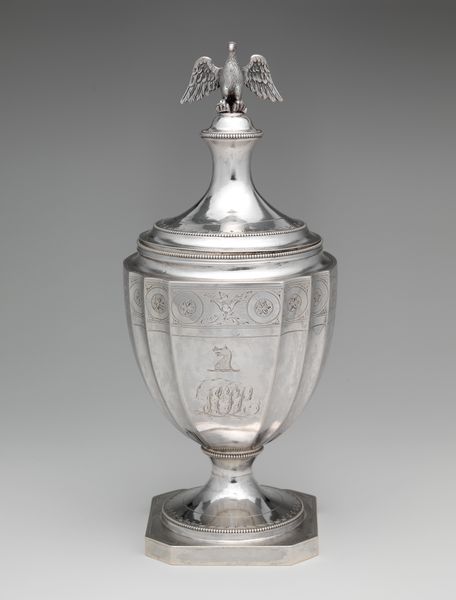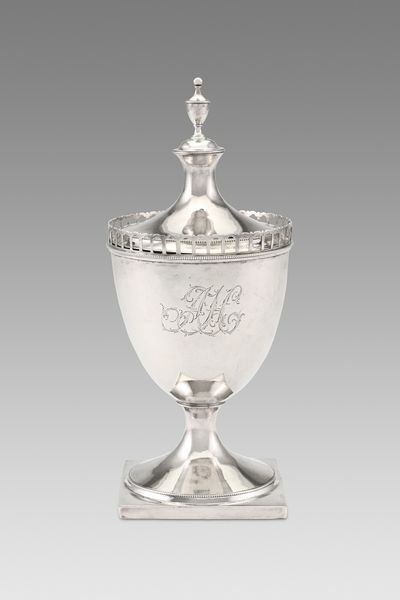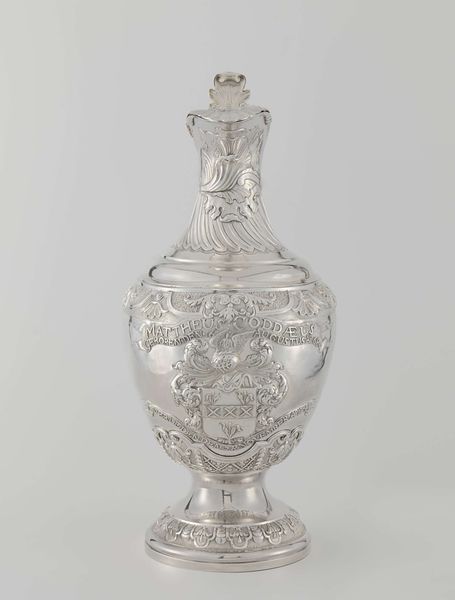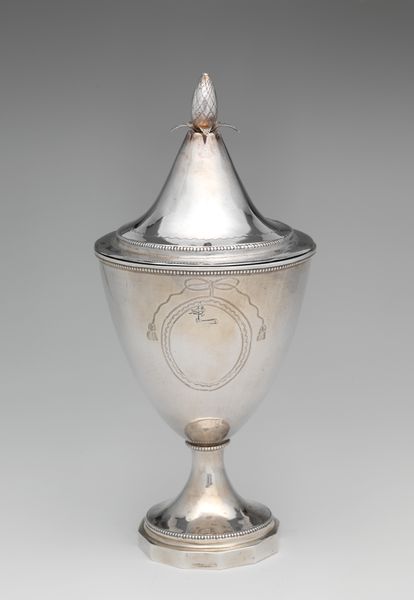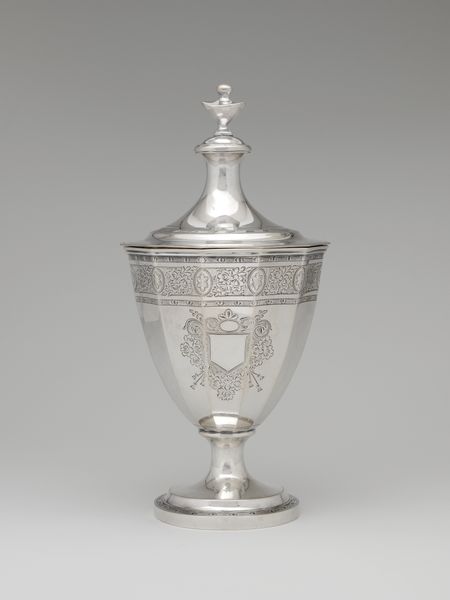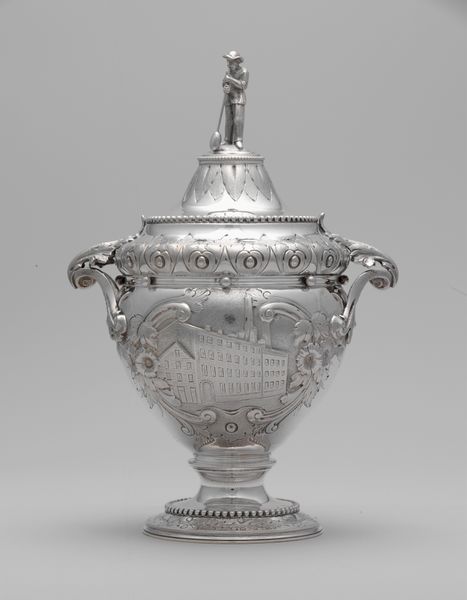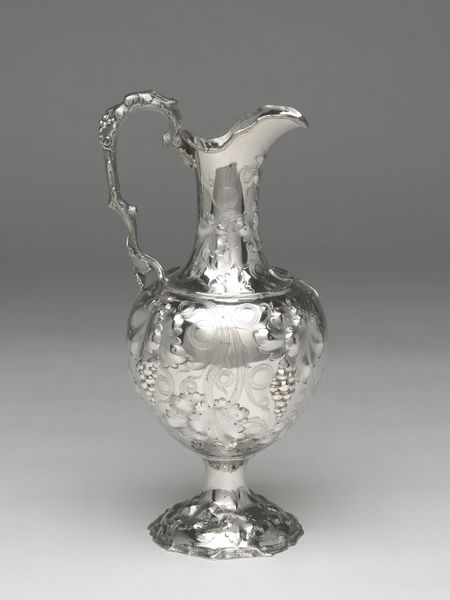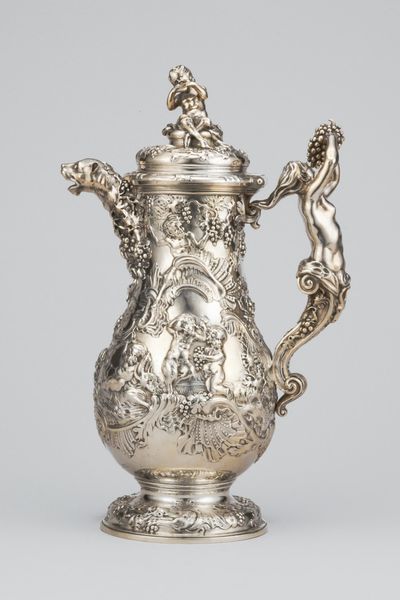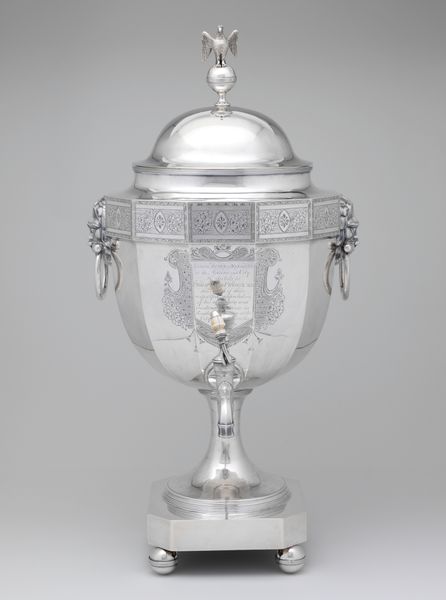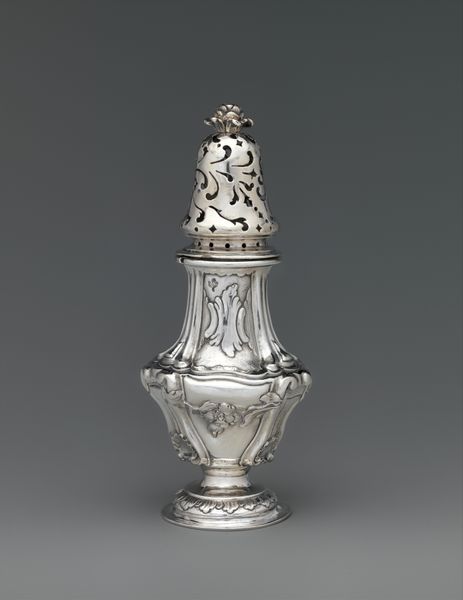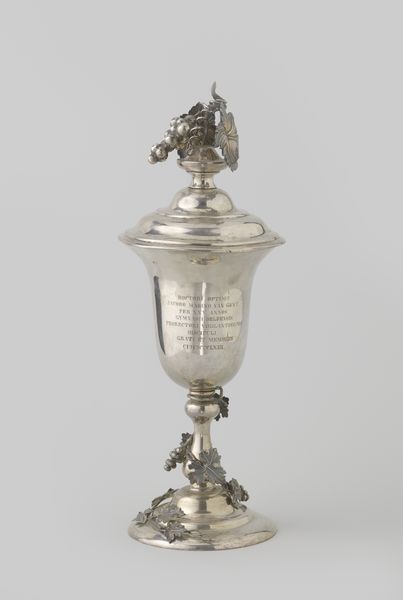
silver, ceramic
#
neoclacissism
#
silver
#
ceramic
#
ceramic
#
united-states
#
decorative-art
Dimensions: Overall: H. 9 13/16 in. (24.9 cm); 12 oz. 5 dwt. (380.8 g) Lip: Diam. 4 1/8 in. (10.5 cm) Foot: 2 3/4 x 2 3/4 in. (7 x 7 cm) Body: H. 6 3/8 in. (16.2 cm); 8 oz. 6 dwt. (258.6 g) Cover: 3 11/16 x 3 7/8 in. (9.4 x 9.8 cm); 3 oz. 19 dwt. (122.2 g)
Copyright: Public Domain
Editor: This object, called "Sugar Bowl", created around 1790-1800 by Daniel Van Voorhis, appears to be crafted from silver. It’s giving me a sense of austere elegance, like something out of a period drama. How do you interpret this work, especially considering its context? Curator: The "Sugar Bowl," while appearing simply elegant, presents a potent nexus for examining social inequality during the Neoclassical era. Silver objects like this signified wealth and status, enabled by a global network of trade and, fundamentally, exploitation. Can you guess what fueled the demand for refined sugar in this era? Editor: Hmm, increased trade routes? Curator: That’s part of it, but what powered that engine? This demand came at a significant human cost. Think about the enslaved labor on sugar plantations in the Caribbean, and how their suffering is completely absent from the gleaming surface of this bowl. Doesn't this disparity invite us to reconsider its beauty? Editor: That definitely reframes it. So, this beautiful object becomes a symbol of a very brutal system? Curator: Exactly. We must interrogate the seemingly benign objects that reinforce historical power dynamics. Van Voorhis was an active participant of it, whether consciously or not, by commodifying the means through which to ingest said labor on sugar plantations. How does that new understanding influence your perspective on the artwork? Editor: It's unsettling, really. I see beauty, but now it’s tainted by the knowledge of its connection to oppression. Curator: Precisely. Hopefully, that tension motivates us to explore the layers of history and challenge the visual and material culture that often sanitizes difficult realities. Editor: This object certainly presents a deeper story than I initially perceived! Curator: Absolutely. Remember to consider the unseen hands that shape our material world.
Comments
No comments
Be the first to comment and join the conversation on the ultimate creative platform.
